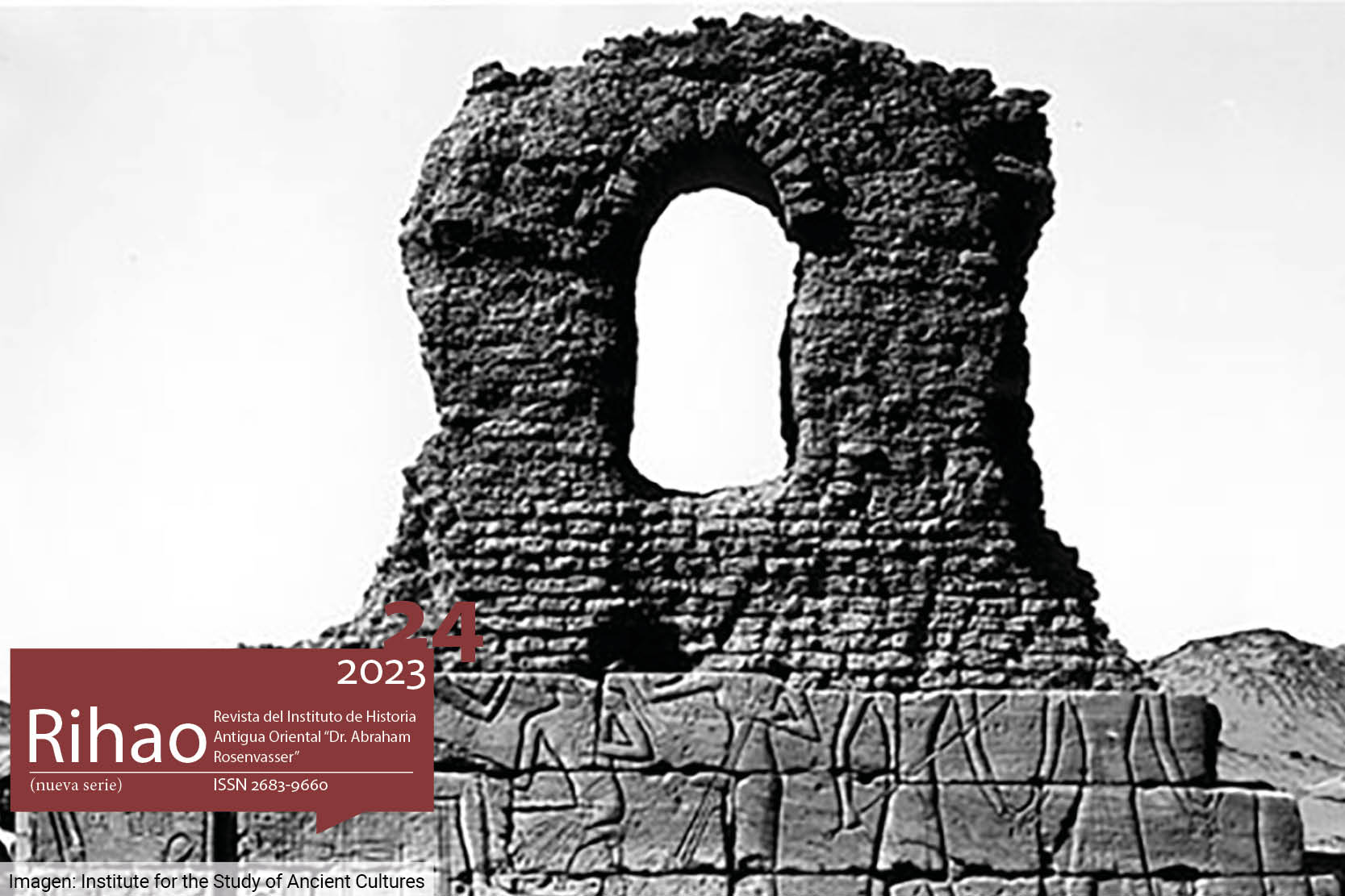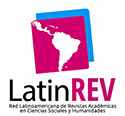El valle olvidado. La crisis de un paradigma en el Valle del Escondite de las Momias Reales en Luxor
Résumé
Tras el descubrimiento de las momias reales en 1881 y la campaña de excavación de Ambrose Lansing en 1920, el Royal Cachette Wadi en Luxor, se ha considerado tradicionalmente un lugar arqueológicamente vacío, fundamentalmente debido a su interpretación desde el mismo momento del descubrimiento como un lugar secreto y de ocultación, que se especifica en la denominación de cachette. Desde 2017, el C2 Project de la Universidad Complutense de Madrid (España) y el Center for the Study of Ancient Egypt (Egipto) ha desarrollado cuatro campañas de trabajo en este wadi. Los resultados permiten disputar la vigencia de la consideración del valle antes mencionada. Se han identificado estructuras en el exterior de la tumba TT 320 y un área de culto definida por la presencia de una efigie monumental destruida, oraciones, nombres de sacerdotes y restos de ofrendas. Un elemento común a estos elementos y a otros presentes en el wadi es un escalón rocoso de origen geológico pero utilizado por seres humanos. Las observaciones arqueoastronómicas realizadas en el wadi permiten comenzar a comprender las razones de ese uso y su relación con el conjunto de elementos identificados.Téléchargements
Les données sur le téléchargement ne sont pas encore disponible.
Références
Belmonte, J. A., Shaltout, M. y Fekri, M. (2009). Astronomy, Landscape and Symbolism: A Study of the Orientation of Ancient Egyptian Temples, en: Belmonte, J. A. y Shaltout, M. (eds.), In Search of Cosmic Order: Selected Essays on Egyptian Archaeoastronomy. El Cairo: Supreme Council of Antiquities Press, 213-284.
Bickerstaffe, D. (2010). The History of the Discovery of the Cache, en: Graefe, E. y Belova, G. (eds.), The Royal Cache TT320: A Re-Examination. El Cairo: Supreme Council of Antiquities Press, 13-36.
Cavillier, G. (2018). The Butehamon Project. Researches on a Royal Scribe in Theban Necropolis. Volume I: The Sources. Turín: Kemet edizioni.
Černý, J. (1956). Graffiti Hiéroglyphiques et Hiératiques de la Nécropole Thébaine. Nos 1060 à 1405. El Cairo: Institut Français d’Archéologie Orientale.
Černý, J. et al. (1969-1983). Graffiti de la Montagne Thébaine. El Cairo: Centre de Documentation et d’Études sur l’Ancienne Égypte.
Hassan, S. (1953). The Great Sphinx and Its Secrets. Historical Studies in the Light of Recent Excavations. El Cairo: Government Press.
Hölzl, R. (2002). Ägyptische Opfertafeln und Kultbecken. Eine Form- und Funktionsanalyse für das Alte, Mittlere und Neuere Reich. Hildesheim: Gerstenberg.
Lansing, A. (1920). Excavations at Thebes, 1918-19, en: The Metropolitan Museum of Art Bulletin 15 (12): 4-12.
Maspero, G. (1881). Le trouvaille de Deir-el-Bahari. El Cairo: Imp. Française F. Mourés & Cia.
Niwiǹski, A. (1984). Butehamun - Schreiber der Nekropolis, en: Studien zur Altägyptischen Kultur 11: 135-156.
Peet, T. E. (1930). The Great Tomb-Robberies of the Twentieth Egyptian Dynasty. I Text, II Plates: Being a Critical Study, with Translations and Commentaries, of the Papyri in Which These Are Recorded. Oxford: Provost & Fellows of Worcester College at the Clarendon Press.
Pérez-Accino, J. R. (2021a). Con Sekhmet en Año de Peste: Arqueología en Egipto en tiempos de la Covid-19, en: Boletín de la Asociación Española de Egiptología 29: 191-198.
Pérez-Accino, J. R. (2021b). C2 Project: Royal Cache Wadi Survey, en: Investigación Arqueológica Española en Egipto: Museo de Almería: 4 de noviembre 2021 - 30 de enero 2022. Sevilla: Consejería de Cultura y Patrimonio Histórico, Junta de Andalucía, 156-169.
Pérez-Accino, J. R. (2022). La dama de la montaña/The Lady of the Mountain, en: Hijas del Nilo. Mujer y sociedad en el Antiguo Egipto (Catálogo de la exposición). Madrid: Grupo Eulen.
Pérez-Accino, J. R. y Elleithy, H. (2019). C2 Project. The Royal Cache Wadi Survey. 2017 Season, en: Molinero, M. A., Díaz-Iglesias, L., Villar, A., Méndez-Rodríguez, D., Fernanz, C. y Pérez-Accino, J. R. (eds.), Horizonte y perspectiva. Trabajos de campo. Trabajos de Egiptología-Papers on Ancient Egypt (TdE) 8: 305-314.
Pérez-Accino, J. R. y Elleithy, H. (2023). Graffiti as Representation of Archaeological Features in the Royal Cache Wadi, en: Polkowsky, P. L. (ed.), Stone Canvas. Towards a better integration of Rock Art and Graffiti Studies in Egypt and Sudan. Bibliothèque d’Etude 183: 253-266.
Pérez-Accino, J. R y Vivas, I. (2023). An Intriguing Feminine Figure in the Royal Cachette Wadi: New Findings from the C2 Project, en: Ayad, M. (ed.), Women in Ancient Egypt. Revisiting Power, Agency and Authonomy. El Cairo: AUC Press, 87-100.
Pérez-Accino, J. R., Manley, W. y Elleithy, H. (2023). A token of Friendship in the Royal Cache Wadi, en: Egyptian Archaeology 62: 18-21.
Sousa, R., Amenta, A. y Cooney, K. M. (eds.) (2020). Bab El-Gasus in Context: Rediscovering the Tomb of the Priests of Amun. Roma / Bristol: “L’Erma” di Bretschneider.
Spiegelberg, W. (1921). Ägyptische und andere Graffiti (Inschriften und Zeichnungen) aus der thebanischen Nekropolis. Heidelberg: C. Winters Universitätsbuchhandlung.
Bickerstaffe, D. (2010). The History of the Discovery of the Cache, en: Graefe, E. y Belova, G. (eds.), The Royal Cache TT320: A Re-Examination. El Cairo: Supreme Council of Antiquities Press, 13-36.
Cavillier, G. (2018). The Butehamon Project. Researches on a Royal Scribe in Theban Necropolis. Volume I: The Sources. Turín: Kemet edizioni.
Černý, J. (1956). Graffiti Hiéroglyphiques et Hiératiques de la Nécropole Thébaine. Nos 1060 à 1405. El Cairo: Institut Français d’Archéologie Orientale.
Černý, J. et al. (1969-1983). Graffiti de la Montagne Thébaine. El Cairo: Centre de Documentation et d’Études sur l’Ancienne Égypte.
Hassan, S. (1953). The Great Sphinx and Its Secrets. Historical Studies in the Light of Recent Excavations. El Cairo: Government Press.
Hölzl, R. (2002). Ägyptische Opfertafeln und Kultbecken. Eine Form- und Funktionsanalyse für das Alte, Mittlere und Neuere Reich. Hildesheim: Gerstenberg.
Lansing, A. (1920). Excavations at Thebes, 1918-19, en: The Metropolitan Museum of Art Bulletin 15 (12): 4-12.
Maspero, G. (1881). Le trouvaille de Deir-el-Bahari. El Cairo: Imp. Française F. Mourés & Cia.
Niwiǹski, A. (1984). Butehamun - Schreiber der Nekropolis, en: Studien zur Altägyptischen Kultur 11: 135-156.
Peet, T. E. (1930). The Great Tomb-Robberies of the Twentieth Egyptian Dynasty. I Text, II Plates: Being a Critical Study, with Translations and Commentaries, of the Papyri in Which These Are Recorded. Oxford: Provost & Fellows of Worcester College at the Clarendon Press.
Pérez-Accino, J. R. (2021a). Con Sekhmet en Año de Peste: Arqueología en Egipto en tiempos de la Covid-19, en: Boletín de la Asociación Española de Egiptología 29: 191-198.
Pérez-Accino, J. R. (2021b). C2 Project: Royal Cache Wadi Survey, en: Investigación Arqueológica Española en Egipto: Museo de Almería: 4 de noviembre 2021 - 30 de enero 2022. Sevilla: Consejería de Cultura y Patrimonio Histórico, Junta de Andalucía, 156-169.
Pérez-Accino, J. R. (2022). La dama de la montaña/The Lady of the Mountain, en: Hijas del Nilo. Mujer y sociedad en el Antiguo Egipto (Catálogo de la exposición). Madrid: Grupo Eulen.
Pérez-Accino, J. R. y Elleithy, H. (2019). C2 Project. The Royal Cache Wadi Survey. 2017 Season, en: Molinero, M. A., Díaz-Iglesias, L., Villar, A., Méndez-Rodríguez, D., Fernanz, C. y Pérez-Accino, J. R. (eds.), Horizonte y perspectiva. Trabajos de campo. Trabajos de Egiptología-Papers on Ancient Egypt (TdE) 8: 305-314.
Pérez-Accino, J. R. y Elleithy, H. (2023). Graffiti as Representation of Archaeological Features in the Royal Cache Wadi, en: Polkowsky, P. L. (ed.), Stone Canvas. Towards a better integration of Rock Art and Graffiti Studies in Egypt and Sudan. Bibliothèque d’Etude 183: 253-266.
Pérez-Accino, J. R y Vivas, I. (2023). An Intriguing Feminine Figure in the Royal Cachette Wadi: New Findings from the C2 Project, en: Ayad, M. (ed.), Women in Ancient Egypt. Revisiting Power, Agency and Authonomy. El Cairo: AUC Press, 87-100.
Pérez-Accino, J. R., Manley, W. y Elleithy, H. (2023). A token of Friendship in the Royal Cache Wadi, en: Egyptian Archaeology 62: 18-21.
Sousa, R., Amenta, A. y Cooney, K. M. (eds.) (2020). Bab El-Gasus in Context: Rediscovering the Tomb of the Priests of Amun. Roma / Bristol: “L’Erma” di Bretschneider.
Spiegelberg, W. (1921). Ägyptische und andere Graffiti (Inschriften und Zeichnungen) aus der thebanischen Nekropolis. Heidelberg: C. Winters Universitätsbuchhandlung.
Publiée
2023-12-01
Comment citer
Pérez-Accino, J. R., & El-Leithy, H. (2023). El valle olvidado. La crisis de un paradigma en el Valle del Escondite de las Momias Reales en Luxor. Revista Del Instituto De Historia Antigua Oriental ’Dr. Abraham Rosenvasser’, (24). https://doi.org/10.34096/rihao.n24.13739
Numéro
Rubrique
Dossier. Egiptología iberoamericana (primera parte)





.jpg)







